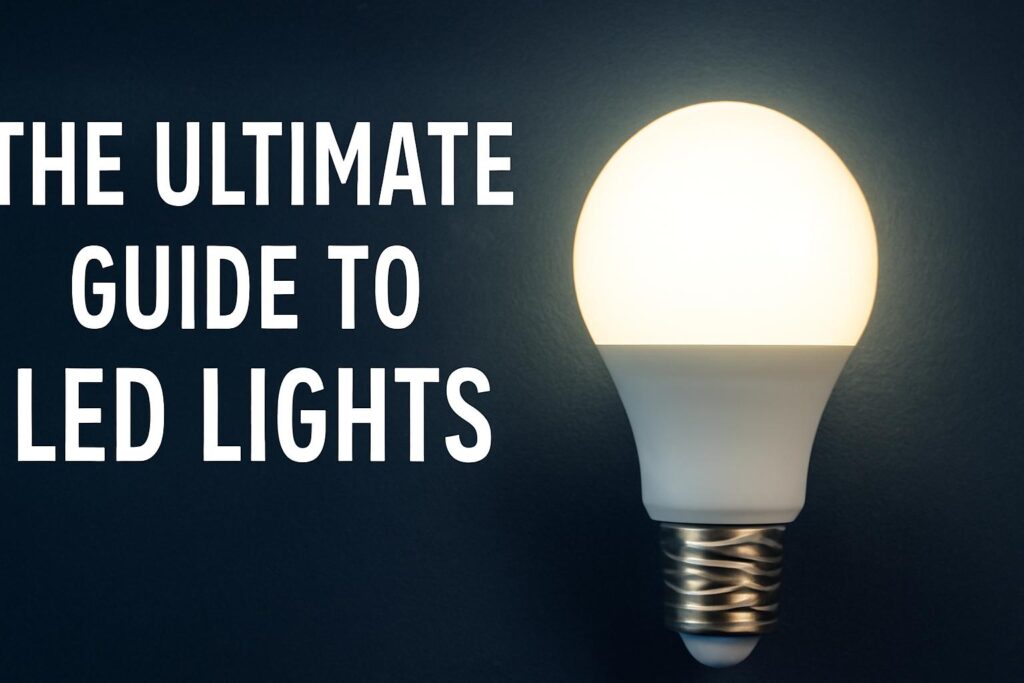
Introduction:
In today’s world, energy-efficient lighting is no longer a luxury, but a necessity. Among all the lighting technologies available, LED (Light Emitting Diode) lights have become a popular choice for homes, businesses, and industries alike. Offering unmatched energy savings, durability, and versatility, LED lights are reshaping the way we illuminate our surroundings. In this blog, we will explore the key benefits of LED lights, how they work, and why you should make the switch.
What Are LED Lights?
LED lights are solid-state lighting (SSL) technology that uses semiconductor materials to produce light. Unlike traditional incandescent or fluorescent bulbs, LEDs generate light through electroluminescence, a process where electrical energy is directly converted into light. This makes them much more energy-efficient and longer-lasting than conventional lighting options.
Key Benefits of LED Lights
-
Energy Efficiency:
One of the main reasons for the widespread adoption of LED lights is their energy efficiency. LEDs use significantly less electricity compared to traditional lighting options, such as incandescent and halogen bulbs. In fact, LEDs consume up to 80% less energy than incandescent bulbs, which translates to substantial savings on your electricity bills. -
Longevity:
LED lights have an impressively long lifespan, often lasting up to 25 times longer than incandescent bulbs. This means fewer replacements and less waste, making them an environmentally-friendly lighting option. -
Durability:
Unlike traditional bulbs that use fragile filaments or glass, LEDs are built with solid-state components, making them highly resistant to shock, vibrations, and extreme temperatures. This durability makes them ideal for a wide range of applications, including outdoor lighting and industrial settings. -
Instant Lighting and Dimming:
LED lights reach their full brightness instantly, unlike fluorescent lights that take time to warm up. Additionally, many LEDs are dimmable, allowing for customizable lighting that fits your needs. -
Environmental Impact:
LEDs are free from hazardous materials like mercury, which is found in some traditional bulbs. This makes them safer for both the environment and humans. Furthermore, their energy efficiency helps to reduce greenhouse gas emissions.
Applications of LED Lights
-
Residential Use:
LEDs are a great choice for home lighting. From ceiling lights to under-cabinet lighting, they offer versatile, energy-saving solutions for every room in the house. LED bulbs are also available in a variety of colors and brightness levels to match your home decor. -
Commercial and Industrial Use:
Businesses and industries benefit greatly from LED lighting due to its cost-effectiveness and long lifespan. LED lights are commonly used in offices, warehouses, retail stores, and factories. They can illuminate large spaces without the need for frequent bulb replacements. -
Outdoor Lighting:
LEDs are perfect for outdoor lighting applications, including streetlights, floodlights, and landscape lighting. Their energy efficiency and durability make them ideal for outdoor use, even in harsh weather conditions.
Conclusion:
LED lights are revolutionizing the lighting industry, offering a sustainable, cost-effective, and efficient solution for various applications. Whether you’re upgrading your home lighting, outfitting a commercial space, or investing in outdoor lighting, LEDs are a smart choice. With their impressive energy savings, long lifespan, and environmental benefits, LEDs are truly the future of illumination.
Make the switch today and enjoy brighter, greener, and more cost-effective lighting for years to come.





